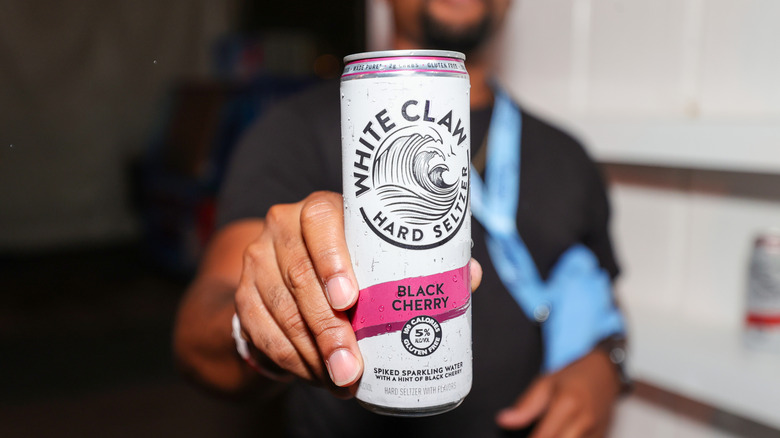Blame This Drink For The Seltzer Trend
Hard seltzers can be said to be today's beverage trend — especially when you see brands like Pizza Hut posting about their new "Hut Seltzers" for April Fool's Day.
Of course, the spearhead for this ubiquity of hard seltzers is White Claw. Any examination of 2019, the year that hard seltzer first became a mainstream drink, finds references to White Claw in particular. See, for example, The Takeout's article on "Why are people obsessed with White Claw?" The answers are that it's convenient, has an uncomplicated flavor, and has successfully marketed itself as a healthy and hip lifestyle.
Even though the market for hard seltzers had grown from 10 brands in 2018 to an astounding 65 in 2020, White Claw still consists of about 50% of all hard seltzer sales. And while other beverage brands are getting into the game, like Natty Light, when people want hard seltzer, they tend to ask for a White Claw.
White Claw's not to blame but has taken the lead
White Claw might be to blame for hard seltzers becoming so mainstream, but that doesn't tell us much about how this beverage came to be so popular. It seems less likely that White Claw is the sole reason for hard seltzer's popularity than the fact that Americans were already primed to like hard seltzers.
In a 2019 piece, Vox noted that White Claw's success was due to appearing at the cross-section of several pre-existing trends. Americans were already giving up soda due to health concerns, but still wanted something bubbly. Hard seltzer is certainly bubbly and has about as many calories as a shot of vodka without the spirit's high alcohol content. Hard seltzer also "feels" fancier and doesn't operate under a heavily gendered image. Most importantly, hard seltzer came at the tail end of the non-hard seltzer craze that momentarily catapulted LaCroix into refrigerators everywhere.
By this point, however, hard seltzers have solidified into their own branded lifestyle, and as popular as they may be, one Eater article describes the ongoing trend as overwhelming and exhausting.

